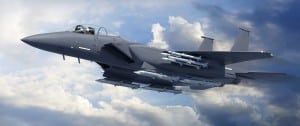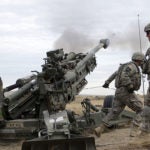
NATIONAL HARBOR, Md.—Boeing [BA] on Tuesday unveiled upgrades geared at beefing up the F-15C’s range, lethality and survivability—including doubling the number of air-to-air missiles the aircraft can carry.The new configuration, called F-15 2040C, is meant to keep the supersonic, twin-engine aircraft in the fleet past 2040 by making enhancements that would complement the abilities of the fifth generation F-22, said Mike Gibbons, the company’s vice president of F-15 programs.“There are clear advantages that the F-22 has that the F-15 doesn’t,…













